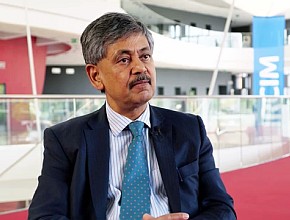Dr Bhaskar Dasgupta is a consultant in rheumatology, head of the Rheumatology Department at Southend University Hospital (UK), and leading expert behind guidelines on polymyalgia rheumatica and giant cell arteritis.
The number of indications for the use of biologic drugs in rheumatic diseases is growing. Which classes of biologics are currently used in rheumatic diseases?
Bhaskar Dasgupta, MB BS, MD: We can broadly classify biologic agents into 3 groups. The anticytokine agents are antibodies that block cytokines, such as tumor necrosis factor (TNF), and these are used quite a lot in the treatment of rheumatoid arthritis; cytokines that block interleukin 6, which, again, are used in the treatment of rheumatoid arthritis but more recently in the treatment of giant cell arteritis; and cytokines such as interleukin 1, which can be blocked and are being increasingly used, for instance, in juvenile-onset idiopathic arthritis. That is one group of drugs.
The second important group of biologic agents are the antilymphocyte agents. These are agents that can block either the T cells or the B cells. They can block T-cell maturation, activation, and action, and similarly with the B cells they can block B-cell activation, differentiation, and antibody production.
The third group of biologic agents are called smaller molecules, and these are molecules that are essentially inhibitors of Janus kinase (JAK), so JAK1, JAK2, JAK3. These include medications such as tofacitinib and baricitinib. This is the third group of biologic agents.
 English
English
 Español
Español
 українська
українська











